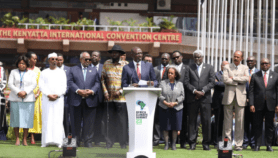By: Sunita Narain
Send to a friend
The details you provide on this page will not be used to send unsolicited email, and will not be sold to a 3rd party. See privacy policy.
I first learnt that smoke from chulhas was deadly when Kirk Smith, then a professor at the East-West Centre in Hawaii, visited our office in the early 1980s. He came with a handheld smoke monitor and told us how monitoring kitchen smoke in Gujarat villages had revealed that women were exposed to total suspended particulates of about 7000 microgrammes per cubic metre (µg/cum) in each cooking period (compare this to annual standards for outdoor air at 140 µg/cum). Worse, how the exposure to benzo(a)pyrene — the carcinogen in cigarette smoke and found in biomass smoke — was equivalent to smoking 10 packets of cigarettes in a day.
Deadly statistics. But the woman was missing. What did this do to her health? What were the options on cooking on stoves using either fuelwood, or twigs, dry leaves, crop residues or cowdung? Little was known. This was the dark side of the ‘other energy crisis’. Few cared to understand, let alone push for alternatives.
But science can be inexorable. In the 1990s, as pollution from vehicles increased, the impact of tiny, respirable particulates, was better understood. What also became clear is that women are exposed to more toxic tiny particulates, in a cooking cycle, than the inhabitants of the most polluted city in the world — a 24-hour concentration measured inside homes can be above 2000 µg/cum. Compare this to the standard for ambient air pollution: 60 µg/cum daily average.
Kirk and a small group of researchers have continued to cajole policy with this science. Today, the World Heath Organization estimates there are over 1.6 million premature deaths each year from cookstove pollution. Some 400,000 to 550,000 women and under-five children die prematurely each year in India because of this deadly smoke. This is a conservative estimate, says Smith.
In addition, he estimates that lost health life years (calculated as disability-adjusted life years or DALYs) could range from 12-17 million each year. Sick days could cross over 2 billion each year. The burden of disease from cookstoves comes right after dirty water and lack of sanitation (which contribute over 10 per cent of the disease burden and malnutrition, over 22 per cent of the disease burden in India).
In other words, by providing access to clean water, sanitation, food and ventilated homes, we could wipe out over half the disease and premature deaths in the country. In this case, it is not the chulha per se that is the problem. The fact is that people are poor, their houses not ventilated. Deadly smoke swirls indoors. What is needed, quite simply, is a well-designed stove and a chimney.
How difficult can this be? For this highly scientific and technical country, impossible, it seems. The government’s improved cookstove programme began in the early 1980s. The concern at this stage was not the health of women. It was rather the health of our forests and the growing desperation for cooking energy sources in rural India. The purpose was to design stoves that would burn more efficiently and reduce firewood consumption. Reducing smoke in homes was an added benefit.
According to the annual report of the Ministry of Non-Conventional Energy Sources, some 34 million improved chulhas have been promoted since the mid-1980s and another 120 million such cookstoves are needed. But unfortunately, the targets hide a lot behind the smoke.
In a recent assessment of the improved stove programme, the National Council of Applied Economic Research found that of the 11.2 million improved stoves installed between 1996-2001, 24.4 per cent were working but not in use and over 18 per cent had been dismantled. More worrying, only 18 per cent of the people using functioning improved chulhas said that it eliminated smoke from kitchens, while 50 per cent said the improvement was marginal. Another 8 per cent actually complained of increased smoke.
Not surprising. Making chulhas that work is possibly more difficult than building a nuclear reactor. The stove has to be durable and cheap. It must follow the principles of thermodynamics, be designed for different utensils. Above all, its users should be able to easily fix it.
The other option is to encourage LPG as the cooking fuel — build distribution networks across the country and find technical solutions to package gas in small size cylinders. In principle, there is nothing wrong with this. After all, middle class Indians continue to get subsidised LPG, in the name of the poor. Or, as Kirk Smith calculates, fuel efficiency increases in the world automobile fleet of just 0.5 per cent each year for the next 10 years would free up — annually — fuel energy enough to meet the cooking needs of all 2 billion people in this period. In fact, given that the world’s rich use the atmospheric space of the poor, this would be climate justice.
But the LPG drive, even with its strong vested interests — UNDP has just signed a partnership with major gas companies to distribute it to poor women in the South — will be difficult to implement. To me, the answer is clear. We will have to invest in many options — from biomass gasification through generating electricity in rural areas to many more designs of chulhas that work. But most of all, we will need impetus and emphasis.
After all, this is not a programme about a low-end technology called chulha. This is a programme about stopping the country’s third largest killer of human beings.
This article was reproduced with the kind permission of Down to Earth.













